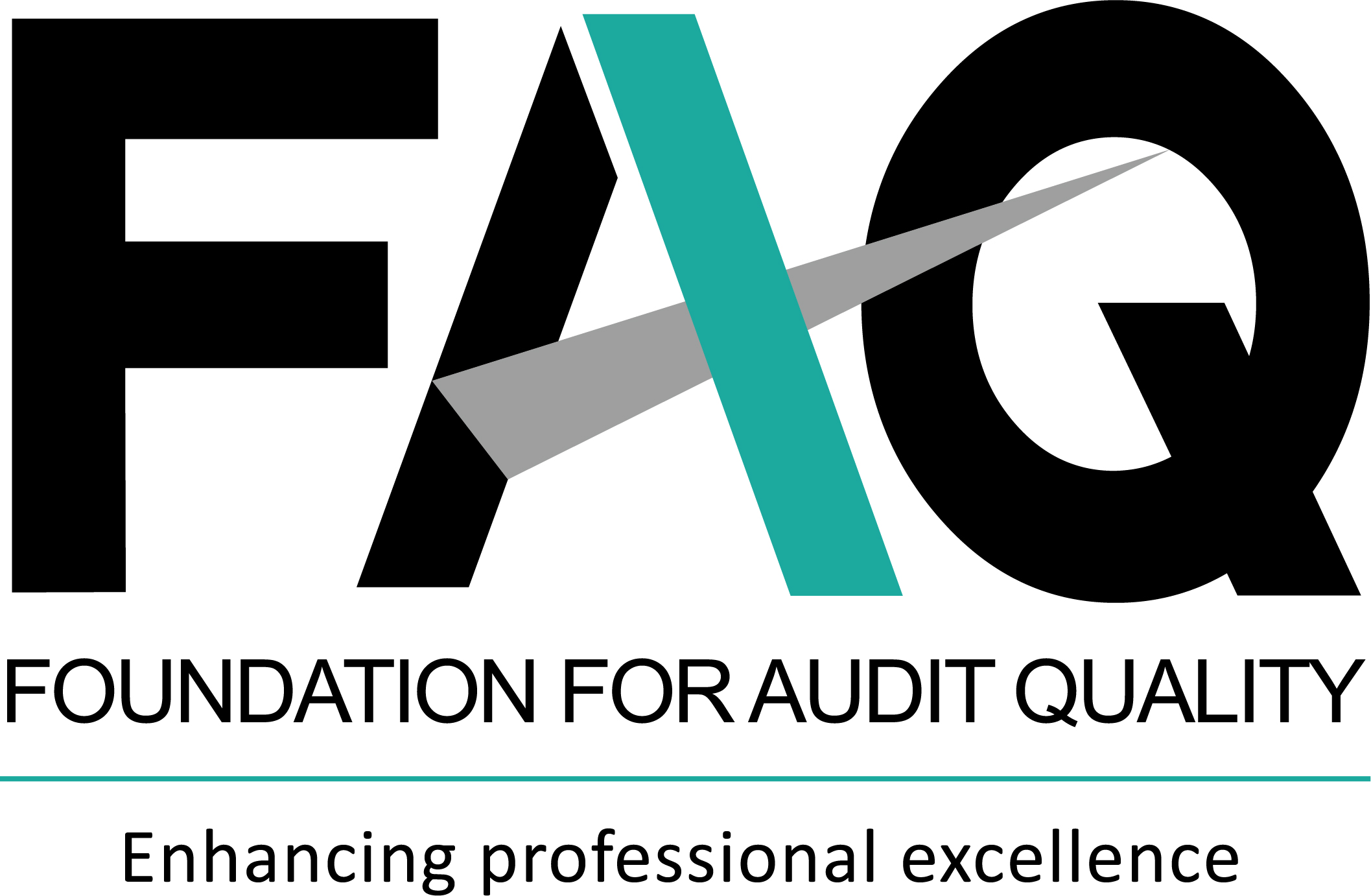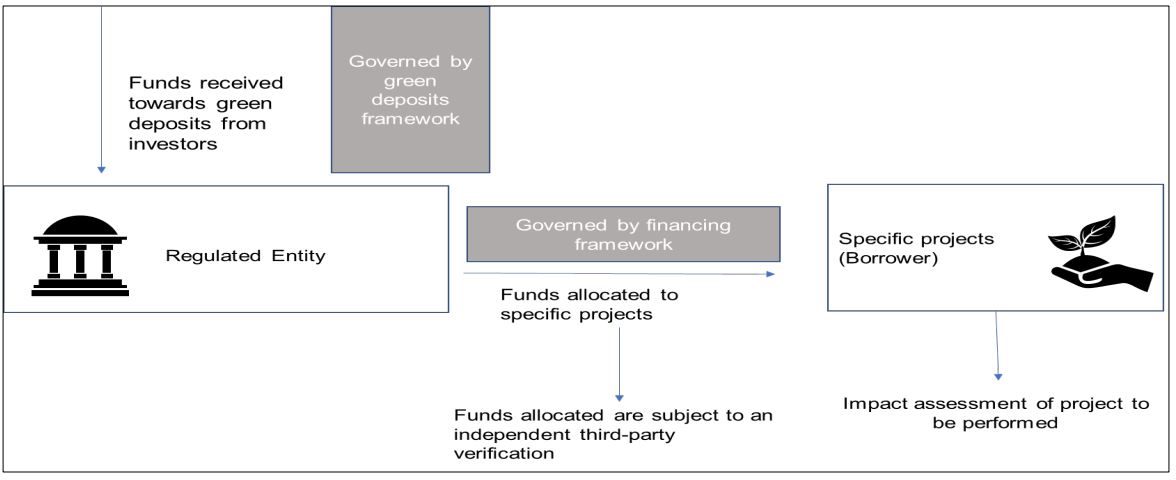Background
RBI, vide a notification dated 22 October 2021 (SBR notification) had introduced the Scale Based Regulation (SBR) framework for NBFCs. The approach renders the regulation and supervision of the NBFCs to be a function of their size, activity, and perceived riskiness. As per the SBR framework, NBFCs that have greater size and complexity, and which pose a higher risk for the financial system would be made subject to a higher degree of regulation, and NBFCs that pose a lower risk for the financial system would be made subject to a lower degree of regulation.
SBR framework comprised of the following four layers:
- NBFC-Base Layer (NBFC-BL)
- NBFC-Middle Layer (NBFC-ML)
- NBFC-Upper Layer (NBFC-UL)
- NBFC-Top Layer (NBFC-TL)
The SBR notification prescribed certain regulatory revisions that would be applicable to various layers of NBFCs. Most of these provisions would be applicable from 1 October 2022.
Vide the SBR framework, RBI mentioned that it would provide further clarifications on certain regulatory revisions subsequently. Consequently, in April’22, RBI has issued various circulars providing clarifications on regulatory revisions. Table 1 below provides a synopsis of regulatory revisions for which clarification was awaited, and for which a clarification has now been issued.
Table 1: Regulatory revisions for which clarifications has been provided
(Source: Foundation for Audit Quality’s analysis, 2022)
An overview of the clarifications issued by RBI are given in the notes below:
A. Capital requirements for NBFC-UL
RBI, vide a notification dated 19 April 2022 has specified the capital requirements for NBFCs-UL. As per the SBR framework, NBFC-UL should maintain, on an on-going basis, Common Equity Tier 1 (CET1) capital of at least 9 per centof Risk Weighted Assets. The circular specifies the formula for the calculation of CET 1 ratio as:
CET 1 ratio = |
Common Equity Tier 1 Capital (CET 1 Capital) (Note 1) |
| Total Risk Weighted Assets (Total RWAs) (Note 2) |
Note 1: As per the circular, elements of CET 1 Capital will comprise the following:
- Paid-up equity share capital issued by the NBFC
- Share premium resulting from the issue of equity shares
- Capital reserves representing surplus arising out of sale proceeds of assets
- Statutory reserves
- Revaluation reserves that meet prescribed conditions
- Other disclosed free reserves, if any
- Retained earnings at the end of the previous financial year (accumulated losses would be reduced from CET 1)
- Profits in current financial year that have been subject to quarterly review or audit may be included on a quarterly basis. Certain adjustments would be made to such profits.
RBI has also prescribed certain regulatory adjustments/ deductions to be applied in calculation of CET 1 Capital.
Note 2: The Total RWAs to be used in computation of CET 1 ratio would be the same as the Total RWAs computed under the relevant directions of the concerned NBFC category.
Applicability:These clarifications are applicable to all NBFCs identified as NBFC-UL, except Core Investment Companies (CICs)9
To access the text of the notification, please click here
B. Disclosures in Financial Statements –Notes to Accounts of NBFCs
NBFCs are required to make disclosures in the financial statements in accordance with the existing prudential guidelines, applicable accounting standards, laws, and regulations. RBI, vide a notification dated 19 April 2022 has issued certain additional disclosure requirements for NBFCs in line with the SBR framework. Comprehensive disclosures that help in the understanding of financial position and performance of the company have been encouraged.
The RBI notification is applicable to all NBFCs and specifies the applicability of specific disclosure requirements to specific NBFC layers as per SBR framework. The disclosure requirements applicable to lower layers of NBFCs would be applicable to NBFCs in higher layers.
The disclosure templates have been categorised into following three sections:
- Section I: Applicable for annual financial statements of NBFC-BL, NBFC-ML and NBFC-UL
- Section II: Applicable for annual financial statements of NBFC-ML and NBFC-UL
- Section III: Applicable for annual financial statements of NBFC-UL
Section I: Disclosures applicable to NBFC-BL, NBFC-ML and NBFC-UL
The following disclosures have been prescribed for NBFCs classified as NBFC-BL, NBFC-ML and NBFC-UL:
- Exposure of the NBFCs: This includes direct and indirect exposure to the real estate sector, exposure to capital market, sectoral exposures, intra-group exposures and unhedged foreign currency exposure.
-
Related party disclosures: NBFCs are required to disclose the following with regard to RPTs:
- Transactions entered into with related parties during the year
- Amounts outstanding at the year-end10
- Maximum amount outstanding during the year10
Further, transactions with parent, subsidiaries, associates/joint ventures, KMPs and relatives of KMPs are required to be disclosed. For the definition of related parties, KMPs and relatives of KMPs, reference should be made to the Companies Act, 2013.
- Disclosure of complaints: NBFCs should provide summary information on complaints received from customers and from the Offices of Ombudsman. Disclosure should also be made of top five grounds of complaints received by the NBFCs from customers.
Section II: Disclosures applicable to NBFC-ML and NBFC-UL
-
Corporate governance disclosures: With respect to corporate governance report, non-listed NBFCs should endeavour to make full disclosure in accordance with the requirements of the LODR regulations11. At the minimum, the following disclosures should be made
- Composition of the board of directors: This includes, composition of the board of directors, details of change in composition of the board of directors, where an independent director resigns before expiry of his/her term, the reasons for resignation as given by him/her should be disclosed, and details of relationship amongst the directors. Formats in which such disclosures are required have been prescribed in the circular.
- Committees of the board and their composition: Mention the names of the committees of the board and for each committee, mention the summarised terms of reference and prescribed details in the format provided.
- General body meetings: Give details of date, place and special resolutions passed at the general body meetings in the prescribed format.
- Details of non-compliances with requirements of the Companies Act, 2013: Give details and reasons of any default in compliance with the requirements of Companies Act, 2013, including with respect to compliance with accounting and secretarial standards.
- Details of penalties and strictures: Details of penalties or strictures imposed on NBFCs by RBI or any other statutory authority.
- Breach of a covenant: NBFCsshould disclose all instances of breach of a covenant of loans availed or debt securities issued.
- Divergence in asset classification and provisioning: NBFCs are required to disclose details of divergence in asset classification and provisioning where additional provisioning requirements assessed by RBI or National Housing Bank (NHB) or additional gross Non-Performing Assets (NPAs) identified by RBI/NHB exceed a prescribed threshold.
Section III: Disclosures applicable for annual financial statement of NBFC-UL
As per the SBR framework issued by RBI, NBFC-UL should be mandatorily listed within three years of identification as NBFC-UL. Accordingly, upon being identified as NBFC-UL, unlisted NBFC-ULs shall draw up a Board approved road map for compliance with the disclosure requirements of a listed company under the LODR Regulations.
Effective date:These guidelines are effective for annual financial statements for the year ending 31 March 2023, and onwards.
To access the text of the notification, please click here
C. Regulatory restrictions in relation to loans and advances
RBI, vide a notification dated 19 April 2022 has provided detailed guidelines on regulatory restrictions on lending in respect of NBFCs across different layers as per the SBR framework. Some of the key provisions mentioned in the guidelines is given below:
Guidelines applicable to NBFC-ML and NBFC-UL
-
Loans and advances to Directors12:
With regard toloans and advances to directors, NBFCs should take following steps:
-
Obtain appropriate sanctions from the board of directors/committee of directors for grant of any loans or advances aggregating INR five crore and above13to:
- Their directors (including the Chairman / Managing Director) or relatives of directors.
- Any firm in which any of their directors or their relatives is interested as a partner, manager, employee, or guarantor.
- Any company in which any of their directors, or their relatives is interested as a major shareholder, director, manager, employee, or guarantor.
The interested director should disclose the nature of his/her interest and abstain from voting on such proposal.
- Obtain appropriate declaration from borrower giving details of the relationship of the borrower to the director for loans and advances aggregating INR5 crore and above,
- Make disclosures in the annual financial statements of aggregate amount of such loans and advances sanctioned in the format prescribed.
-
Loans and advances to senior officers of the NBFC12: With regard to loans and advances to senior officers of NBFC, the NBFC should ensure:
- All loans and advances sanctioned to senior officers are reported to the board of directors.
- A senior officer or a committee comprising of a senior officer should not sanction any credit to a relative of that senior officer. Such a facility has to be sanctioned by the next higher sanctioning authority under the delegation of powers.
- Appropriate declarations from borrower giving details of the relationship of the borrower to the senior officer for loans and advances aggregating INR5 crore and above is obtained,
- Disclosures have been made in the annual financial statements of aggregate amount of such loans and advances sanctioned in the format prescribed.
-
Loans and advances to real estate sector: The borrowers from the real estate sector are required to obtain prior permission from government/local government/other statutory authorities for the project, wherever required. The disbursements of loans and advances should be made only after the borrower has obtained requisite clearances from the government/other statutory authorities.
Guidelines for NBFC-BL
In its notification, RBI has mentioned that NBFC-BL should have a board approved policy14 in place for grant of loans to directors, senior officers, and relatives of directors and to the entities where directors or their relatives have major shareholding. The policy should prescribe a threshold beyond which loans to the above-mentioned persons would be reported to the board of directors. A disclosure is required in the annual financial statements stating the aggregate amount of such sanctioned loans and advances.
Effective date: These guidelines will be effective from 1 October 2022.
To access the text of the notification, please click here
D. Large Exposures Framework for NBFC-UL
Large Exposure (LE) refers to the sum of all exposure values of an NBFC-UL to a counterparty and / or a group of connected counterparties, if it is equal to or above 10 percent of the NBFC-UL’s eligible capital base.
RBI, vide a notification dated 19 April 2022 has issued certain guidelines with respect to Large Exposure Framework (LEF) for NBFC-UL, which aims at addressing credit risk concentration in NBFC-UL. The guidelines set out to identify large exposures, refine the criteria for grouping of connected counterparties and put in place reporting norms for large exposures. The guidelines would be applicable to NBFC-UL, both at the solo and consolidated (group) level, comprising of both on and off-balance sheet exposures.
Few key details specified in the guidelines are:
| |
NBFC-UL (Other than IFC*) |
NBFC-UL (IFC) |
| Single counterparty |
- 20 per cent
- Additional 5 per cent with board of directors’ approval
- Additional 5 per cent if exposure towards infrastructure loan / investment
(Single counterparty limit should not exceed 25 per cent in any case)
|
- 25 per cent
- Additional 5 per cent with board of directors’ approval
|
| Group of connected counterparties |
- 25 per cent
- Additional 10 per cent if exposure towards infrastructure loan / investment
|
35 per cent |
(*Infrastructure Finance Company)
(Source: RBI notification on Large Exposures Framework for Non-Banking Financial Company -Upper Layer, issued on 19 April 2022)
-
Reporting considerations: NBFC-ULwould report its large exposures to RBI as per the reporting template prescribed in the LEF framework. LEF reporting should cover the following:
- All exposures, meeting the definition of large exposure.
- All other exposures, measured in a prescribed manner.
- Exempted exposures with values equal to or above 10 per cent of NBFC-UL’s eligible capital base.
- 10 largest exposures to counterparties (irrespective of their values relative to NBFC-UL’s eligible capital base).
Effective date: These instructions will be applicable from 1 October 2022.
To access the text of the notification, please click here
E. Compliance function and role of Chief Compliance Officer
Compliance risk is ‘the risk of legal or regulatory sanctions, material financial loss or loss of reputation an NBFC may suffer, as a result of its failure to comply with laws, regulations, rules and codes of conduct, etc. applicable to its activities. Thus, it is essential to monitor and mitigate compliance risk.
Accordingly, as per the SBR, NBFCs in the Upper Layer (NBFC-UL) and Middle Layer (NBFC-ML), are required to have an independent Compliance Function and a Chief Compliance Officer (CCO).
Taking this requirement into consideration, RBI, vide circular dated 11 April 2022 has prescribed a set of minimumguidelines with respect to the compliance function and role of the CCO. According to the guidelines introduced, the Board / Board Committee15 must ensure that an appropriate compliance policy16 is put in place, implemented and periodicity of review of compliance risk determined. The circular has also prescribed an active role for the senior management with respect to carrying out compliance risk identification and assessment exercise, at least once a year (annual review) and submitting to the Board / Board Committee its review of the compliance failures identified, consequential losses, regulatory actions taken, etc.
Some of the key guidelines with regard to compliance policy, framework for compliance function and role of Chief Compliance Officer (CCO) include:
Compliance policy : NBFCs should lay down a compliance policy that is approved by the board of directors of the NBFC. It should clearly spell out the NBFCs’ compliance philosophy, expectations on compliance culture, structure and role of compliance function, role of CCO, reviewing and reporting on compliance risk.
Responsibilities of Compliance Function :The compliance function would be responsible for undertaking the following activities at the minimum:
- Assisting the board of directors and senior management in overseeing the implementation of compliance policy.
- Playing the central role in identifying the level of compliance risk in the organisation and ensuring that appropriate risk mitigants are put in place. It might also serve as a reference point for the staff from operational departments for seeking clarifications and interpretation of various regulatory and statutory guidelines.
- Monitoring and testing compliance by performing sufficient and representative compliance testing and reporting its results to the senior management
- Ensuring compliance of regulatory and supervisory directions given by RBI and other regulators17 in a time bound and sustainable manner.
Table 3: Chief Compliance Officer
| Tenure |
CCO to be appointed for a minimum tenure of not less than three years
In exceptional cases, the board of directors/board committee could relax the minimum tenure by one year, provided appropriate succession planning has been put in place.
|
| Removal |
CCO to be transferred / removed before completion of the tenure only in exceptional circumstances, with the prior approval of the board of directors/board committee. |
| Removal |
CCO to have direct reporting lines to the MD & CEO and/board of directors/board committee18
If CCO reports to the MD & CEO, the board of directors/board committee should meet the CCO at quarterly intervals on a one-to-one basis, without the presence of senior management, including MD & CEO.
|
| Roles and responsibilities of CCO |
Some of the key roles and responsibilities of the CCO include:
- CCO is the head of the compliance department of the NBFC.
- CCO is a member of the ‘new product’ committee/s and the nodal point of contact between the NBFC and the regulators / supervisors.
- CCO has authority to communicate with the staff members and have access to all records and information, necessary to enable her / him in carrying out the entrusted responsibilities19
- CCO can participate in the structured and other routine discussions with RBI and other regulators.
|
(Source: Foundation for Audit Quality’s analysis, 2022 read with RBI notification on Compliance Function and Role of Chief Compliance Officer (CCO) -NBFCs issued on 11 April 2022)
Effective date: NBFC-UL and NBFC-ML should put in place a board of directors approved policy and a compliance function, including the appointment of a CCO latest by 1 April 2023 and 1 October 2023 respectively.
To access the text of RBI notification, please click here
F. Guidelines on compensation of Key Managerial Personnel (KMP) and senior management in NBFCs
In order to address issues arising out of excessive risk-taking approach caused by misaligned compensation packages, the SBR required NBFCs classified in the Middle (NBFC-ML) and Upper Layer (NBFC-UL) of the SBR framework to put in place a compensation policy that is approved by the board of directors.
In this regard, RBI, vide a notification dated 29 April 2022, has issued broad guidelines for formulating compensation policies of KMP and members of senior management. As per the guidelines, the compensation policy of an NBFC should at the minimum include the following provisions:
- Constitutions of Nomination and Remuneration Committee (NRC): NBFC-ML and NBFC-UL should constitute an NRC, which will have the constitution, powers, functions and duties as laid down in the Companies Act, 2013. The NRC may work in close coordination with the Risk Management Committee of the NBFC to achieve effective alignment between compensation and risks. The NRC may also ensure ‘fit and proper’ status of proposed/existing directors and that there is no conflict of interest in appointment of directors in the board of directors of the NBFC.
- Principles for fixed/variable pay structures: The proportion of variable pay in total compensation of a director or KMP should be commensurate with the role and prudent risk-taking profile of KMPs/senior management.
- Malus20/clawback21 provisions: The deferred compensation to directors/KMP/members of senior management may be subject to malus/clawback arrangements in the event of subdued or negative financial performance of the company and/or the relevant line of business or employee misconduct in any year.
Effective date: These guidelines will come into effect from 1 April 2023.
To access the text of RBI notification, please click here
- CICs identified as NBFC-UL would continue to maintain, on an on-going basis, adjusted net worth as per the Master Direction DoR(NBFC).PD.003/03.10.119/2016-17 -Core Investment Companies (Reserve Bank) Directions, 2016 dated August 25, 2016.
- Pertaining to borrowings, deposits, placement of deposits, advances, etc.
- Paragraph C of Schedule V of the LODR regulations prescribes disclosures to be made in the section on corporate governance in the annual report.
- Similar norms would apply while awarding contracts to directors or senior officers
- Proposals for credit facilities of an amount less than INR5 crores to such borrowers may be sanctioned by the appropriate authority in the NBFC, however, the matter should be reported to the Board of Directors.
- Policy approved by the board of directors
- Board Committee means ‘Audit Committee of the Board’, wherever applicable under extant regulations
- Compliance policy should be reviewed at least once a year
- Directions issued by other regulators should be complied with, in cases where the activities of the entity are not limited to the regulation / supervision of RBI. Any discomfort conveyed to the NBFC, or action taken, if any by other authorities should be brought to the notice of RBI.
- CCO would not have any reporting relationship with the business verticals.
- Dual Hatting’ must be avoided, i.e., the CCO should not be given any responsibility that brings elements of conflict of interest. CCO should not be a member of any committee which conflicts her / his role as CCO with responsibility as a member of the committee. In case CCO is a member of any such committee, it should only be an advisory role.
- A malus arrangement permits the NBFC to prevent vesting of all or part of the amount of a deferred remuneration. Malus arrangement does not reverse vesting after it has already occurred
- A clawback arrangement is a contractual agreement between the employees and the NBFC in which the employee agrees to return previously paid or vested remuneration to the NBFC under certain circumstances
Action Points for Auditors
- Guidelines on CET 1 capital: While reviewing the CET 1 ratio, auditors should take note of the various adjustments that are required to be made to the elements comprising the CET 1 capital. These adjustments should be discussed with the management.
- Disclosures in financial statements: The additional disclosures are effective for annual financial statements for the year ending 31 March 2023. Accordingly, auditors should make use of the time they have to determine the formats in which disclosures are required. They should also ascertain whether such disclosures were already being made by their clients. Timely discussions should be initiated with clients on these disclosures, and auditors should encourage clients to provide more comprehensive disclosures than the minimum required, especially if such disclosures significantly aid in the understanding of the financial position and performance of the NBFC.
- Regulatory restrictions on loans and advances: Auditors should take note of the various requirements when advancing loans to directors or senior officers-such as specific approvals, declarations from directors and disclosures in financial statements. While performing audit procedures on loans and advances, auditors should ensure these requirements are in place.
- Large exposure framework: As per the LEF framework, while computing the eligible capital base, in case of any addition to capital funds, the entity is required to obtain an external auditor’s certificate with respect to augmentation of capital and submit the same to RBI. This certificate can be issued by an external auditor; thus, auditors should engage with their clients for the purpose of issue of this certificate.
- Compliance function: Auditors should perform the necessary audit procedures in order to identify compliance issues and deficiencies, if any. The compliance deficiencies so identified should be brought to the notice of the compliance function (once that has been set up) and ensure that the recommendations get implemented across entity’s compliance structure.
- Since entity’s compliance function would be subject to regular internal audit, the statutory auditors should refer the report published by the internal auditors for identifying the compliance risks and deficiencies.



